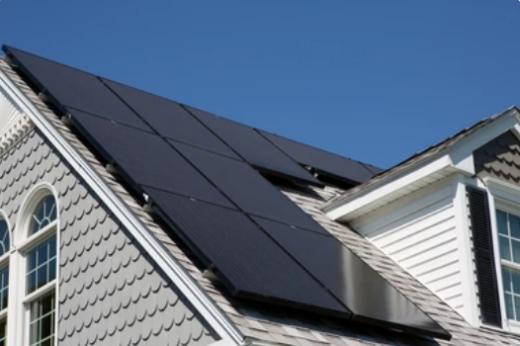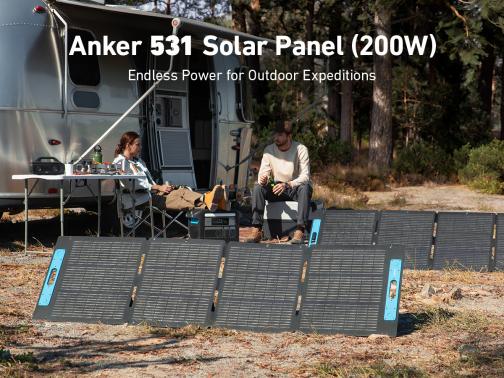
What Are Solar Panels Made of?Unlock the Mystery behind Solar Panels
Solar energy is becoming an increasingly popular way to power homes and businesses, as it's a renewable energy source that can help reduce electricity bills and even generate income. Solar panels are made up of several components that interact to produce electricity. If you've been wondering what are solar panels made from and want to learn more about their construction and performance, read on!

What Are Solar Panels Made Out Of?
Nowadays, solar panels pop up everywhere. Understanding what goes into making up a solar panel will help you ensure that you get the most out of your investment. And what is a solar panel made of indeed? Let’s take a look.
Solar Cells
Solar cells are the most important component of a solar panel, as they are responsible for converting sunlight into energy. How are solar panels made? Solar cells are made up of photovoltaic material, such as silicon, which is used to capture and convert photons from the sun into electricity.
Polycrystalline and monocrystalline silicon cells are two of the most commonly used types in commercial applications today. Generally, monocrystalline silicon cells are more efficient than polycrystalline silicon cells. For example, Anker 531 Solar Panels use monocrystalline solar cells to ensure a maximum efficiency rate of up to 23% and reliability.

Frame and Mounting Structure
Frame and mounting structures are needed to mount the panels so that they can capture sunlight properly. The most common materials used for framing are aluminum or stainless steel. Aluminum is an ideal material because it provides strength and rigidity while remaining lightweight. If properly maintained, aluminum frames can last for up to 25 years or more in outdoor conditions. Several different types of systems can be used depending on the location of installation, including roof-mounted rails, ground-mounted racks, pole-mounted racks, etc.
Backsheet
The function of a solar panel backsheet is to protect the solar cells from environmental factors such as moisture, UV radiation, and temperature fluctuations. Backsheets are made of a variety of materials, such as polyvinyl fluoride (PVF), ethylene tetrafluoroethylene (ETFE) and polyamide (PA). Each material has its own benefits and drawbacks that should be considered when deciding on a particular type.
- PVF is an ideal choice for outdoor use because it is highly resistant to ultraviolet radiation and weathering.
- ETFE is also an excellent option for outdoor installations due to its lightweight and flexibility, as well as its electrical insulation properties.
- PA is often used when the cost is a primary consideration since it offers superior performance at a lower price point than other materials.
In addition to these standard backsheet materials, newer technologies such as metalized polypropylene (MPP) are becoming increasingly popular due to their improved durability and greater efficiency gains compared to traditional backsheets.
Junction Box
The junction box contains the electrical components that convert sunlight into electricity, as well as protect against back-feeding issues and other environmental conditions. It also houses all of the wiring connections within your solar setup, making it an important part of your overall system.

How Are Solar Panels Made? (Step by Step)
How is a solar panel made? The process of creating a solar panel is complicated, yet it can be broken down into several fundamental steps.
Step 1: Trim cells from a silicon wafer, the primary component of solar cells. These pieces are cut to the desired size and shape before being linked with conductive material.
Step 2: Solder electrical contacts on the backside of each cell to form an array.
Step 3: Add a backsheet to further protect the solar panel from moisture, UV radiation and other exterior influences.
Step 4: Put these cells within a frame to safeguard them from external conditions.
These steps on how the solar panels are made are also practical on how to make a homemade solar panel.
Wrapping Up
Solar panels have revolutionized the way we think about renewable energy. With an array of materials and production processes, these highly advanced sustainable energy systems can be designed to match your needs while helping reduce your carbon footprint. As the technology behind solar panels continues to evolve and become more efficient, so too will our ability to reap all the benefits they offer. Solar energy is a safe and powerful tool for positive environmental change — one we should take advantage of immediately. Endeavoring to install them in our homes and workplaces is not only a necessity for successful sustainability efforts but also essential if we are to ensure the health of our planet’s future generations. So start now — invest in both time and money into equipping yourself with solar panels today!
FAQ
How Fragile are Solar Panels?
In general, solar panels are made to be tough and durable. They are designed to withstand heavy rain, snow, hail, wind, and extreme temperatures. That being said, they are not indestructible. A strong impact or a sharp object could potentially damage the panels. Therefore, proper installation and regular maintenance are key factors in ensuring the longevity and efficiency of solar panels.
What is the Best Material for Solar?
While there are various options available, the best material for solar is undoubtedly silicon. This abundant element has proven to be highly effective in converting sunlight into electricity, making it the most commonly used material in commercial solar panels. In fact, silicon-based solar cells can convert up to 22% of the sun's energy into electricity. Additionally, silicon is durable, easy to manufacture and has a long lifespan. With continuous advancements in technology, silicon could remain the top choice for solar panels for years to come.
How Long do Solar Panels Last?
No matter where are most solar panels made, the life expectancy of a solar panel depends largely on the quality of materials used to construct it and the amount of maintenance that is put into it. On average, solar panels are designed to last up to 25 years with proper care and regular maintenance.















